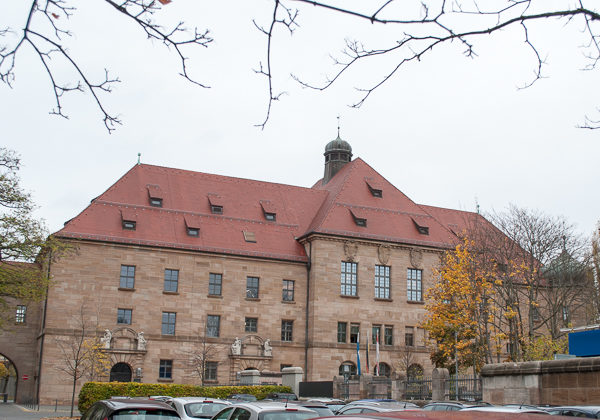
After visiting the Zeppelin Field, our last stop in Nuremberg was the Palace of Justice. Located to the east of the “old (medieval) city,” the building was one of the few in Nuremberg to survive the Allied bombings of early 1945. The Allies chose the small east wing of the Palace of Justice to hold what are now referred to as “The Nuremberg Trials.”
Despite what many people feel are the symbolic reasons for choosing Nuremberg to hold these trials, the real reason for their choice was much more pragmatic.
Iconic photographs of the first International Military Tribunal trial are well known and show the interior of the courtroom during the ten-month trial held between 20 November 1945 and 1 October 1946. The courtroom, open to the public (when not being used for trials), is known today as “Courtroom 600” and is easily recognizable even though it has been restored to its pre-trial appearance.
Why The Palace of Justice?
Yes, Nuremberg was a symbolic city to hold the trials of Nazi leaders and their accomplices. It was the site each year between 1927 and 1938 where the Reichsparteitage (Reich Party Congress) met and between 1933 and 1938 the annual National Socialist Party or Nazi rallies were held on the Party Rally Grounds (click here to read the blog Zeppelin Field). It was also here that the Nuremberg Laws were passed representing the first formal actions against Jews and a precursor to the Holocaust.
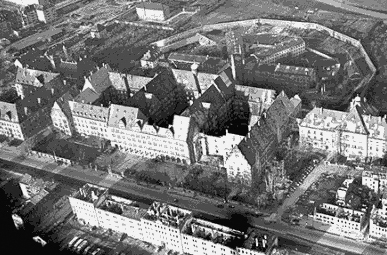
However, there were other pragmatic issues that made the city ideal for the trials. First, it was one of the only buildings still standing large enough to hold the trial as well as accommodating the staffs of the court and prosecution teams. Second, the complex included a prison adjacent to the Palace of Justice. A circular wall surrounded the prison complex adding additional security. Next to the prison was a gymnasium where on 16 October 1946, the condemned men were hanged (executions arising from verdicts of the subsequent Nuremberg Trials were carried out at Landsberg Prison in Bavaria).
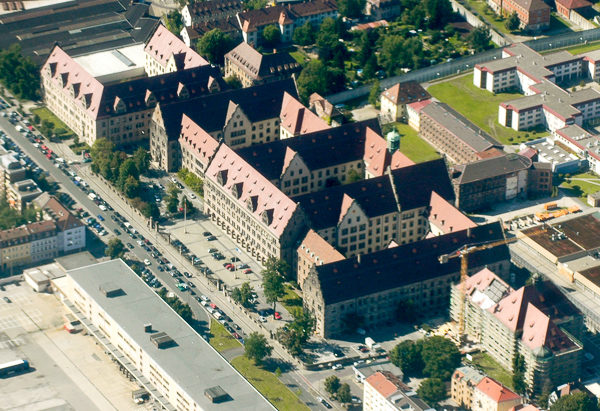
The prison consisted of five long corridors radiating out from a central building. One of the corridors housed the defendants’ cells. After Robert Ley’s suicide, each cell was assigned a guard to watch the prisoner 24-hours a day. A light was always on in their cell, day and night. By the early 1980s, four of the five cell corridors had been demolished as were the gymnasium and surrounding wall.
Courtroom 600 Appearance: Before and After
Major modifications to the courtroom were made to accommodate the almost five years of trials. Small rooms with holes in the wall were created around the top of the room and you can see these in the photos of 1945. Photographers and filmmakers occupied these rooms. Special lighting was installed in the courtroom so that flash bulbs were not needed.
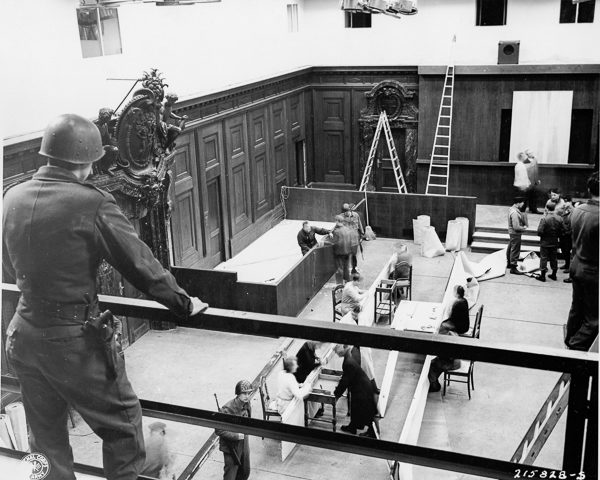
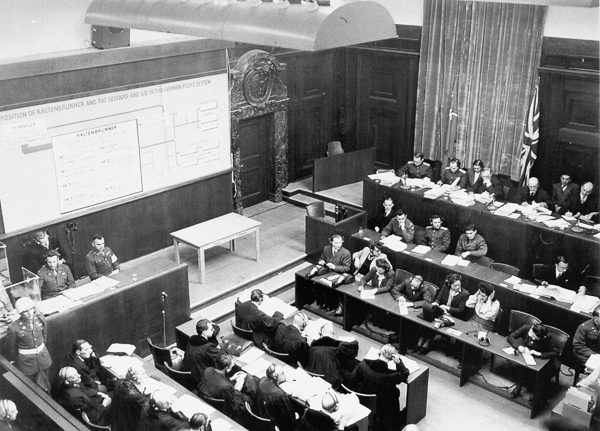
Today, you walk into the courtroom from the rear and sit on benches divided into three sections. Directly ahead of you is the judges’ platform. During the trials, the judges’ platform was to your right in front of the massive windows. The back wall was used to present large charts, maps, and the projection of pictures and film. The witness box was placed to the right along the wall close to the judges’ platform.
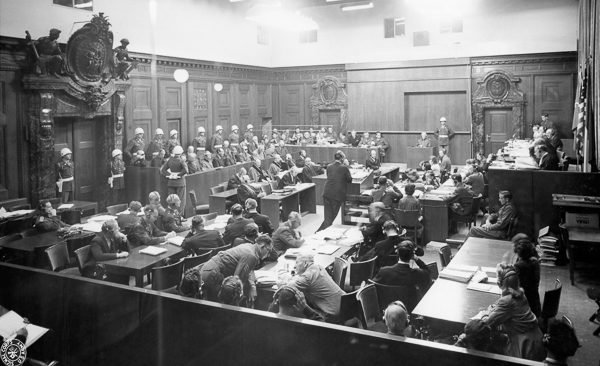
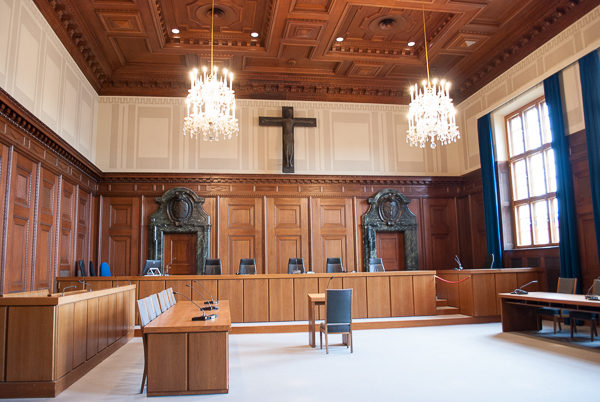
They created a spectator gallery that would have been behind and above where you sit today. The area you are sitting in as a visitor was for the journalists covering the trial. To accommodate the press, this area was expanded back into the hall where you enter the room today (they built the rear of the press area over the staircase). Watch Howard K. Smith, a reporter at the trials.
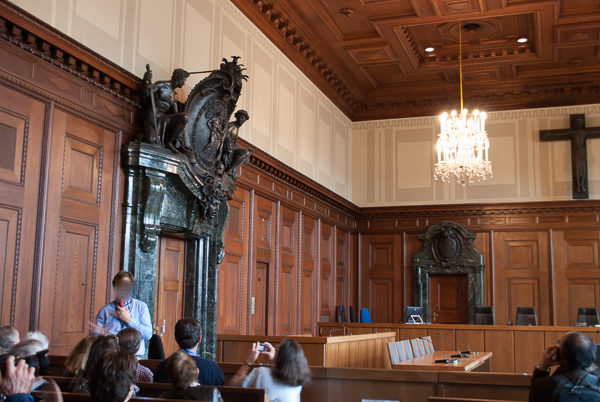
Many other modifications were made. Most of them are gone now but you can still identify the wall along which the defendants’ dock was located. The clock and door are still visible. The defendants would walk each day from their prison cells through a specially constructed wooden passageway to the Palace of Justice and then enter the courtroom through the door which opened directly into the dock.
While you can visit the courtroom, it is only possible when there is no trial being held. Nuremberg will cease holding trials in the courtroom beginning next year. They plan on opening it up to the general public as part of their exhibit on the trials. I hope they plan on restoring the room to the way it was during the trials. Watch Nuremberg Trials Courtroom Tour.
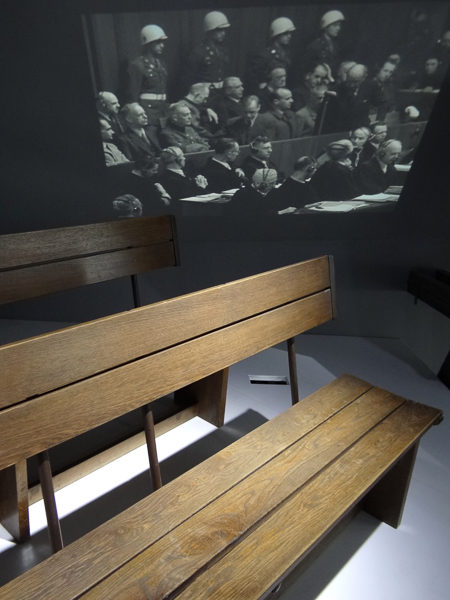
The Subsequent Trials
While most people associate this courtroom with the trial of the former Nazi leaders and main war criminals, it was also the venue for additional trials formally known as the “Trials of War Criminals before the Nuremberg Military Tribunals.” These trials occurred between 9 December 1946 and 13 April 1949.
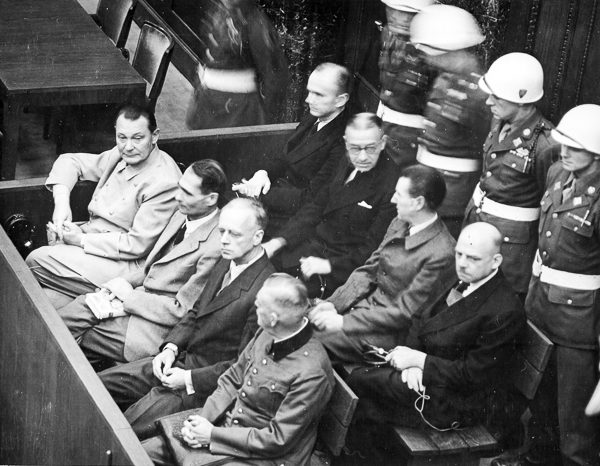
After the first trial, the Allies were experiencing increasing differences between themselves and it became impossible for agreement on the next steps for bringing former Nazis to trial. During late 1945, the Allies empowered the occupying authorities (American, British, French, and Russian) to try suspected war criminals in their respective occupation zones. The Americans made the decision to hold twelve separate trials in Nuremberg.
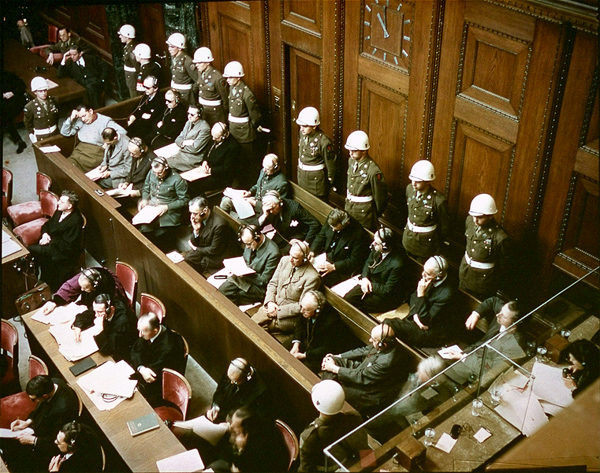
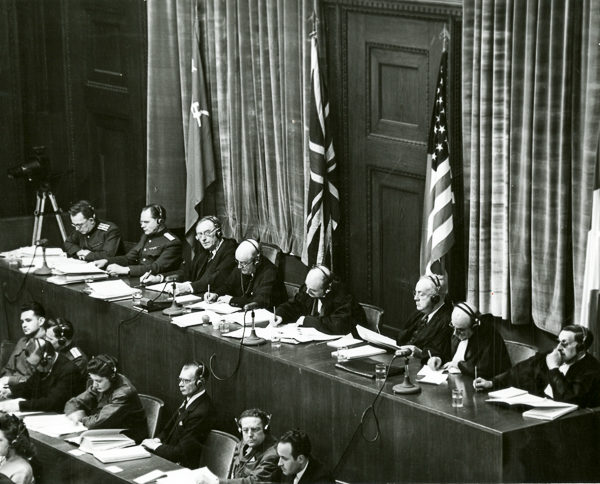
These trials included the Doctors’ Trial (1946-47) (learn more here), the Judges’ Trial (1947; the excellent movie Judgment at Nuremberg is based on this trial), the Einsatzgruppen Trial (1947-48) (learn more here), the Krupp Trial (1947-48), IG Farben Trial (1947-48), and the High Command Trial (1947-48). In all, 177 men and women came before the American Military Tribunal. The defendants ranged from doctors, lawyers, and industrialists to members of the military, government, police, and the SS. It quickly became clear how deep Nazism had penetrated into all German professions.
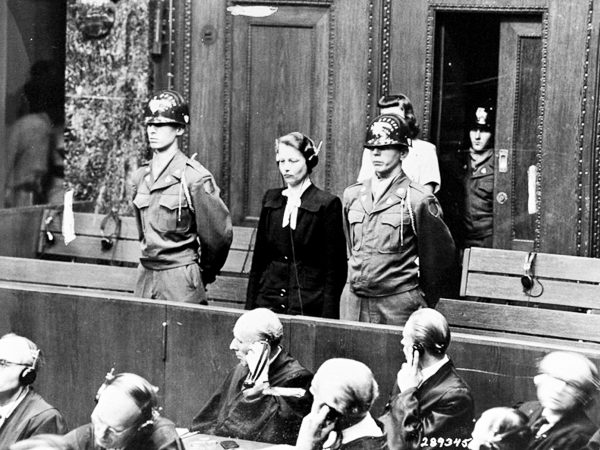
Twenty-four men were sentenced to death as a result of the subsequent trials held in Nuremberg (principally from the Einsatzgruppen Trial and Doctors’ Trial). Twelve were executed and the other half eventually had their sentences reduced and subsequently released.
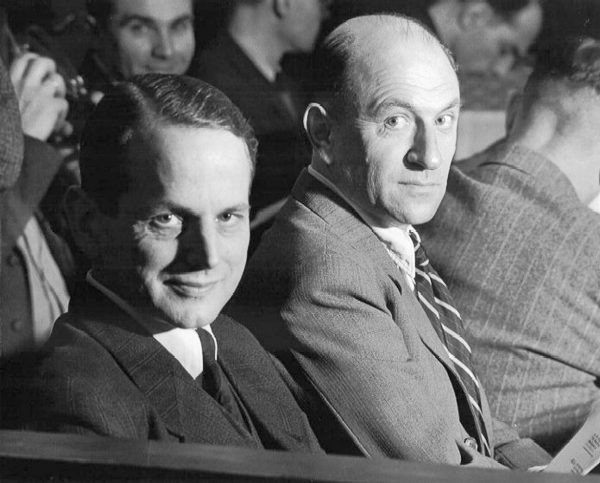
One hundred nineteen defendants received prison sentences ranging from time served (98) up to life imprisonment (21).
Thirty-four defendants were acquitted.
By the end of the 1950s, none of these defendants remained in jail having been released or dying in prison.
Only four of the main trial’s defendants receiving prison terms served out their full sentences (Döenitz—ten years; Speer and von Schirach—twenty years; Hess—life).
Watch “Nuremberg: The Verdicts”.
Other separate trials were held outside Nuremberg and focused on individuals charged with crimes against humanity associated with the extermination camps. These trials included the camps of Auschwitz (1947), Sobibor (1965), Belsen (1945), Dachau (1945-48), and Ravensbrück, just to name a few.
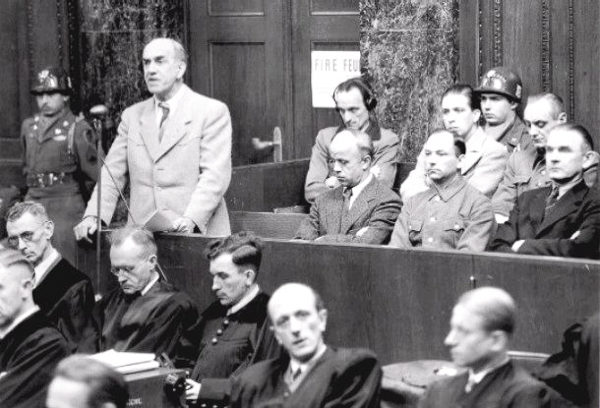
Aftermath
By the time of the last trial in 1949, most people wanted to forget World War II. Countries like France were busy trying to either cover up their collaborationist roles by rewriting history or they were just trying to pick up the pieces of their shattered societies. Combatants returned to their respective countries to begin their post-war careers and start families.
A new war—the Cold War—was now preoccupying governments, politicians, and citizens. Surviving victims who could provide first-hand accounts of the Nazi atrocities did not come forward. It was not until 1960 when Adolf Eichmann was captured by Israeli Mossad operatives and brought to justice that Nazi crimes against humanity once again stepped back onto the world’s center stage. Nazi hunters such as Fritz Bauer, Simon Wiesenthal, Tuvia Friedman, Beate and Serge Klarsfeld, Eli Rosenbaum, and countless others, took up the challenge to bring former Nazi criminals to justice.
Our Next Blog
Our next blog will be an extension of this one. We will feature a defendant from the main trial who came to be known as “The Good Nazi.” He was extremely adept at swaying the Nuremberg judges to the point where he evaded the hangman and received a relatively light sentence. Upon his release in 1966, he became a best-selling author, speaker, and millionaire by continuing to manipulate the facts of his involvement in crimes perpetuated by the Nazis. His “story” was finally investigated whereby documented facts proved him to be a liar. In fact, many people concluded he should have hanged for the seriousness of his crimes.
Recommended Reading
Dodd, Christopher J. with Lary Bloom. Letters from Nuremberg. New York: Three Rivers Press, 2007.
Gregor, Neil. Haunted City: Nuremberg and the Nazi Past. New Haven: Yale University Press, 2008.
Nagorski, Andrew. The Nazi Hunters. New York: Simon & Schuster, 2016.
Overy, Richard. Interrogations: The Nazi Elite in Allied Hands, 1945. New York: Penguin Books, 2001.
Tusa, Ann and John Tusa. The Nuremberg Trial. New York: Skyhorse Publishing, 2010.
Andrew Nagorski’s book picks up where Nuremberg ends. It is a fascinating account of the various Nazi hunters and the stories of their quests to bring men and women like Eichmann, Klaus Barbie, Rudolf Höss, Ilse Koch, and Josef Mengele to account and bear responsibility for their crimes against humanity.
What’s New With Sandy and Stew?
We’ve sent the final manuscript file Where Did They Burn The Grand Master of the Knights Templar? Volume Two to our printer, Pollock Printing. This is the fourth volume in what will become seven books on historical events in Paris. The next two books will deal with the Nazi occupation of Paris. It was quite a task to whittle down the numerous interesting sites associated with that period of time. For those of you interested in World War II and the German occupation of Paris, you will find these books to be quite unique.
Someone Is Commenting On Our Blogs
If there is a topic you’d like to see a blog written about, please don’t hesitate to contact me. I love hearing from you so keep those comments coming.
Please tell your friends about our blog site and encourage them to visit and subscribe. Sandy and I are trying to increase our audience and we need your help through your friends and social media followers.
Why Would You Want To Buy Our “Walks Through History” Books?
Simple.
You like to travel and experience history and historical events. You like to see original buildings that had a significant impact on the people and events of the history you’re engaged with. You want to know the stories behind the brick and mortar in front of you.
The walking tour books are meticulously researched so you can go directly to those sites and learn about the building’s history as well as an introduction to some of the more interesting people associated with it.
Thank You
Sandy and I appreciate you visiting with us. We have some exciting things on the horizon and we’ll keep you updated as we go along.
Share This:
Follow Stew:
Find Stew’s books on Amazon and iBooks.
Please note that we do not and will not take compensation from individuals or companies mentioned or promoted in the blogs.
Walks Through History
Copyright © 2017 Stew Ross

